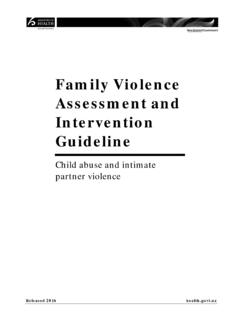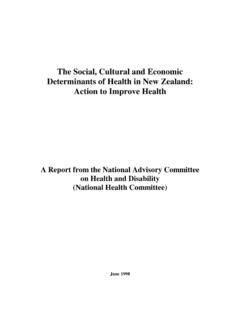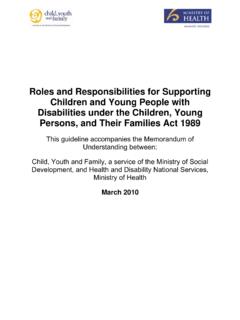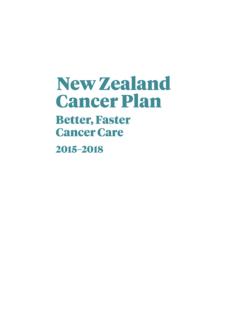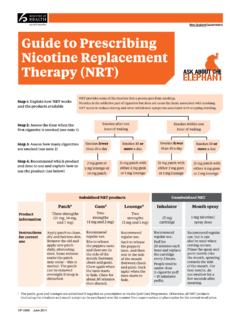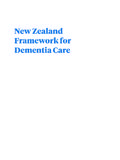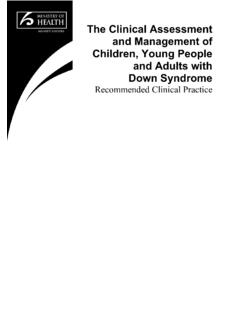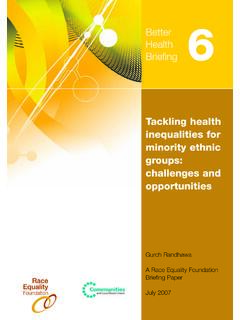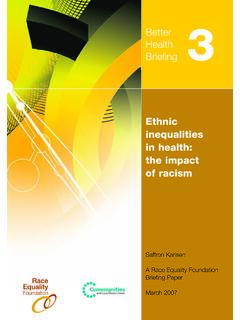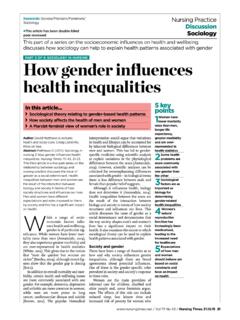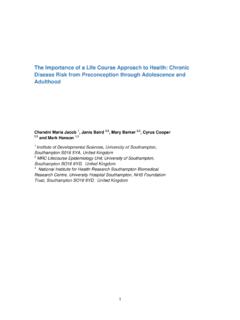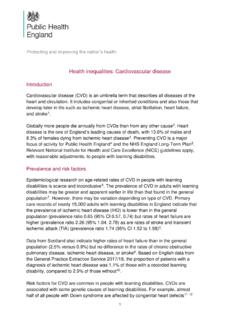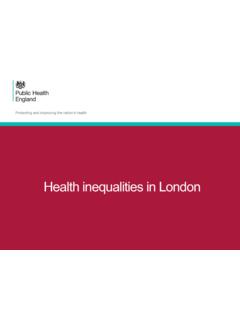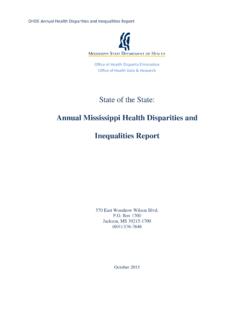Transcription of Reducing Inequalities in Health - Ministry of Health
1 Reducing Inequalitiesin HealthReducing Inequalities in HealthiiPublished in September 2002by the Ministry of HealthPO Box 5013, Wellington, New ZealandISBN 0-478-27062-3 (Book)ISBN 0-478- 27065-8 (Internet)HP 3521 This document is available on the Ministry of Health website: Inequalities in HealthForewordSignificant Inequalities exist among different groups of New Zealanders. For example,Ma ori, Pacific peoples and people from lower socioeconomic groups have worse healthand die younger than other New Zealanders. The reasons for Health Inequalities are complexand generally beyond the control of the groups most New Zealand Health Strategy identifies the need to reduce Inequalities in Health . TheMinistry of Health and its advisors believe that a co-ordinated approach to reducinginequalities in Health is necessary.
2 This paper, therefore, describes Inequalities in Health inNew Zealand and sets out a framework and principles that can be used at national, regionaland local levels by policy-makers, funders, service providers and community groups totake action to reduce Inequalities in framework identifies the need for action that targets: social, economic, cultural and historical factors contributing to Inequalities in Health pathways through which these factors influence Health , for example, Health -relatedbehaviours and environmental conditions Health and disability services the impact of poor Health and disability on economic and social coming months, the Ministry of Health will organise workshops in the Health sector toconsider the principles and framework set out in this paper.
3 Discussion will cover howthese ideas can be integrated into the day-to-day work of policy-makers, funders and Inequalities are a major public Health problem. It is only through the co-ordinatedefforts of all of us working within the Health sector, as well as of those working in othersectors and in communities, that we will be able to make a significant impact on urge you to consider, as you read this document, how you can make a O Poutasi (Dr)Director-General of HealthReducing Inequalities in HealthivAcknowledgementsThis project is led jointly by the Ma ori Health and Public Health Policy Groups of theMinistry of are grateful to members of the Ministry s Health Inequalities Expert Advisory Groupwho have given their time and expertise to assist with this work programme.
4 JohnBroughton, Fiona Cram, Peter Crampton, Jackie Cumming, Chris Cunningham, SitalekiFinau, Cheryl Hamilton, Philippa Howden-Chapman, Cindy Kiro, Papaarangi Reid,Margaret Southwick and Chris would also like to thank our colleagues in other Ministry of Health directorates, thepublic Health sector and other government departments for their support and commentson earlier versions of this Inequalities in HealthContentsForeword .. iiiAcknowledgements .. ivExecutive summary .. viiIntroduction .. 1 What is the challenge? .. 3 Treaty of Waitangi .. 5 What do we have to gain? .. 7 Health Inequalities in New Zealand .. 8A model of Health determinants fitting it all together .. 16 What we can do an intervention framework .. 18 Who is responsible for Reducing Health Inequalities ?
5 24 Where to from here? .. 25 Appendix One: Measuring deprivation and socioeconomic status .. 26 Glossary .. 27 References .. 29 Figures and tablesFigure 1:Determinants of Health .. 1 Figure 2:Life expectancy at four ages, by deprivation decile, for the totalNew Zealand population, 1995 97 .. 9 Figure 3A: Deprivation profile of the European and Other ethnic groups .. 10 Figure 3B: Deprivation profile of the Ma ori ethnic group .. 10 Figure 3C: Deprivation profile of the Pacific ethnic group .. 11 Figure 4:Life expectancy at birth, by aggregated deprivation decile, for Ma ori, Pacific and Europeanethnic groups* .. 11 Figure 5:Mortality and public hospitalisations, Ma ori and non-Ma ori malesaged 45 64 years, 1996 97 .. 12 Figure 6:Regional life expectancy at birth, 1995 97.
6 13 Figure 7:SF36 profiles by gender 1996/97 .. 14 Figure 8:Model of the social and economic determinants of Health .. 16 Figure 9:Four possible targets for interventions to reduce socioeconomic Inequalities in Health .. 18 Figure 10: Intervention framework to improve Health and reduce Inequalities .. 19 Table A1:Variables included in NZDep96 .. 26 Reducing Inequalities in HealthviviiReducing Inequalities in HealthExecutive summaryWe all have a role to play in Reducing Inequalities in Health in New Zealand. Regardless ofhow we measure Health by risk factors, use of services or outcomes we find that particulargroups are consistently disadvantaged in regard to Health . And these Inequalities affect is associated with Health . And more than this, whatever our socioeconomic position,we are likely to be experiencing worse Health than the group who is a little better off thanwe are in terms of education, occupation, income or deprivation.
7 Action to reduceinequalities in Health , therefore, has the potential to improve the Health of all New Zealand, ethnic identity is an important dimension of Health Inequalities . Ma orihealth status is demonstrably poorer than other New Zealanders; actions to improve Ma orihealth also recognise Treaty of Waitangi obligations of the Crown. Pacific peoples alsohave poorer Health than Pa keha . In addition, gender and geographical Inequalities areimportant areas for these socioeconomic, ethnic, gender and geographic Inequalities requires apopulation Health approach that takes account of all the influences on Health and how theycan be tackled to improve Health . This approach requires both intersectoral action thataddresses the social and economic determinants of Health and action within Health anddisability services Inequalities in Health proposes principles that should be applied to whateveractivities we undertake in the Health sector to ensure that those activities help to overcomehealth Inequalities .
8 The proposed framework for intervention entails developing andimplementing comprehensive strategies at four tackling the root causes of Health Inequalities , that is, the social, economic,cultural and historical factors that fundamentally determine pathways targeting material, psychosocial and behavioural factors thatmediate the impact of structural factors on and disability services undertaking specific actions within Health and minimising the impact of disability and illness on socioeconomic at these four levels should be undertaken nationally, regionally and locally bypolicy-makers, funders and framework can be used to review current practice and ensure that actions contribute toimproving the Health of individuals and populations and to Reducing Inequalities in Inequalities in HealthviiiIt also highlights the importance of factors outside the direct control of the Health sector inshaping the Health of our population.
9 Those outside the Health sector particularly TheTreasury, the social welfare, education, housing and labour market sectors, and localgovernment can contribute significantly to the task of Reducing Inequalities in in Reducing Inequalities in Health brings positive results for the individual, theeconomy and society. It enables New Zealanders to live healthier, longer lives. In turn, ahealthier population will increase the country s will be opportunities to discuss this document, and to apply the principles andframework to specific Health issues and service areas, as the Ministry of Health holds sectorworkshops over the coming Inequalities in HealthIntroductionThe New Zealand Health Strategy provides a framework for the Health sector to improvethe overall Health of New Zealanders and to reduce Inequalities amongst New Zealanders,with a focus on Ma ori, Pacific peoples and low-income New implementation of the New Zealand Health Strategy requires a population healthapproach.
10 This approach takes into account all the factors that influence Health and howthey can be tackled to improve Health . Figure 1 shows a model of the determinants ofhealth, which are a complex and varied combination of 1: Determinants of healthAge, sex and hereditary factors are key contributors to our Health . They are relativelyunchangeable. Recent advances in medical technology may make some genetic changespossible, but such developments will only affect a very small section of the are, however, other factors affecting our Health and independence over which wepotentially have more control. Their impact on our Health can be affected by changingindividual and/or societal behaviour. As illustrated in figure 1, these factors include: individual lifestyle factors for example, whether we smoke, exercise, how much alcoholwe drink social and community influences for example, whether we belong to strong socialnetworks, feel valued and empowered to participate in decisions that affect our healthand wellbeingSource.
